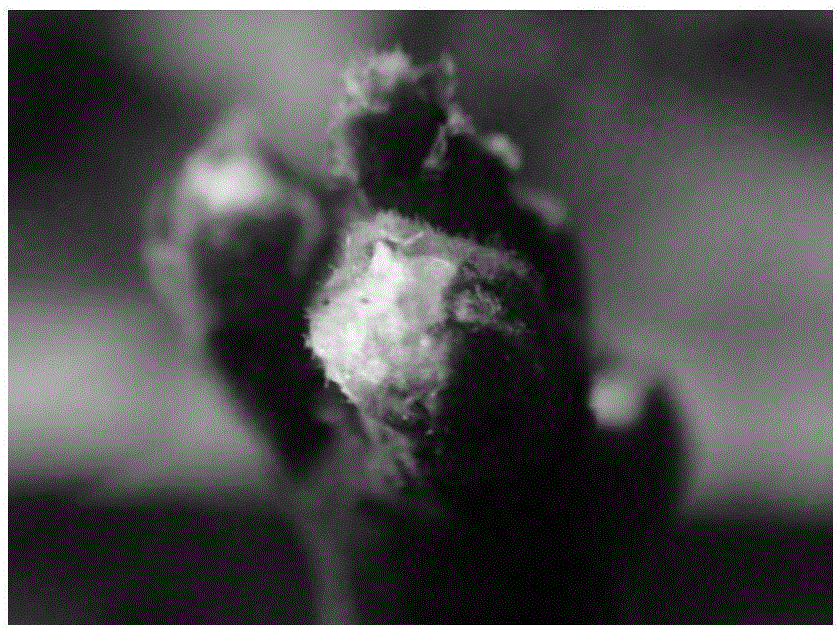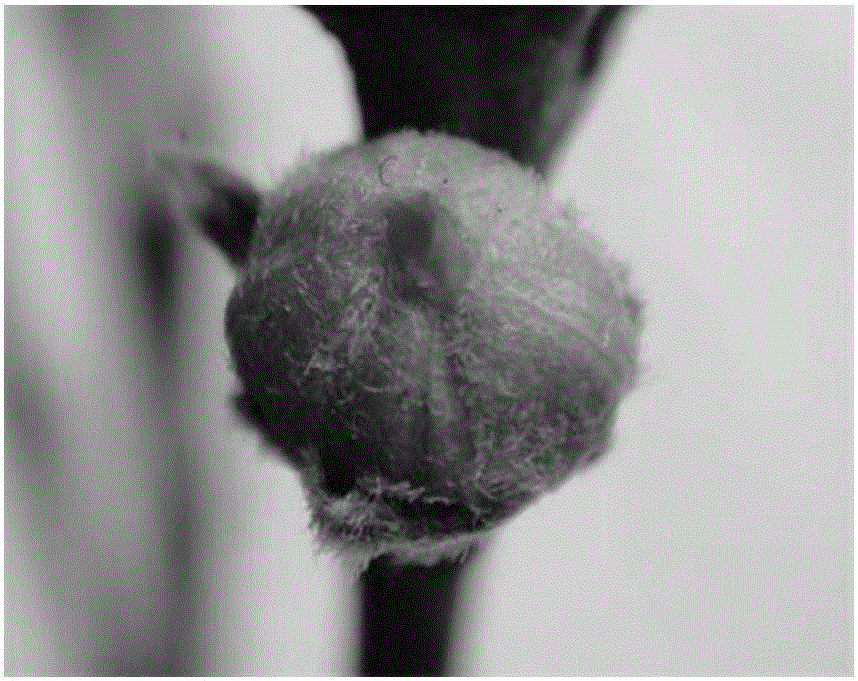A method for regulating the flowering period of peach cut flowers and ensuring the flowering quality
A cut flower quality technology, applied in the biological field, can solve the problem that peach cut flowers cannot meet the viewing needs, and achieve the effect of promoting development and great social benefits
- Summary
- Abstract
- Description
- Claims
- Application Information
AI Technical Summary
Problems solved by technology
Method used
Image
Examples
Embodiment 1
[0054] Embodiment 1, the research of cooling capacity
[0055] The test site is in Guilin, Guangxi. Guilin has a mid-subtropical humid monsoon climate, with a mild climate and abundant rainfall. The annual average temperature is around 19°C. The hottest months are July and August. The monthly average temperature is around 28°C, and the extreme maximum temperature does not exceed 39°C; the coldest month is In January and February, the average temperature is 8-9°C, and the average minimum temperature is not lower than 5°C. There have also been severe cold weather of minus 3-4°C.
[0056] Experimental materials: The main peach trees in Guilin - Beijing No. 1, Tianjin Shuimi and Crisp Sweet Peach, and the discarded peach branches pruned in autumn.
[0057] Experimental drug: improved Hoagland solution (HoaglandSolution)
[0058] To explore the low temperature requirements of different varieties (Beijing No.1, Tianjin Shuimi and Crispy Sweet Peach) to break dormancy by using low ...
Embodiment 2
[0066] Embodiment 2, flower forcing and fresh-keeping test
[0067] The experimental site is Beijing Forestry University. The temperature comparison test site is set in the room with heating supply, the hall and corridor of the dormitory building. The test sites for the opening angle of the branches and the fresh-keeping solution are all indoors. The indoor temperature is 19-22 °C, the humidity is 20%-41%, and natural light is scattered.
[0068] Test materials: Beijing No. 1 peach branches, Tianjin juicy peach branches and green peach branches from the campus of Beijing Forestry University collected from the Guilin test site.
[0069] Test drugs: improved Hoagland nutrient solution, S (sucrose, sucrose), 6-BA (6-Benzylaminopurine, 6-benzylaminoadenine, cytokinin), 8-HQ (8-hydroxy-quinoline, 8-hydroxy quinoline)
[0070] To study the temperature and humidity conditions required for flowering, the effect of branch placement angle on the flowering rate of flower buds, and the ...
Embodiment 3
[0099] Embodiment 3, Spring Festival peach cut flower comprehensive control test
[0100] The test site is in Guilin, Guangxi, and the flower forcing and fresh-keeping tests are carried out indoors, with natural light scattering.
[0101] Test material: Beijing No. 1 in the Guilin test site, and the annual growth status of the pruned discarded branches is similar.
[0102] Experimental drug: fresh-keeping solution, configured with the best ingredients and ratios obtained from flower-urging and fresh-keeping tests.
[0103] The amount of cooling required and the most suitable cultivation conditions obtained from the previous research experiments guide the production practice, and use the whole set of control measures to achieve peach blossoms in advance of the Spring Festival and prolong their viewing time.
[0104] Nectarine variety Beijing No. 1 requires a cooling capacity of 384 hours at 5°C, so it needs at least 11 days of low-temperature treatment at 5°C to release dorman...
PUM
 Login to View More
Login to View More Abstract
Description
Claims
Application Information
 Login to View More
Login to View More - R&D
- Intellectual Property
- Life Sciences
- Materials
- Tech Scout
- Unparalleled Data Quality
- Higher Quality Content
- 60% Fewer Hallucinations
Browse by: Latest US Patents, China's latest patents, Technical Efficacy Thesaurus, Application Domain, Technology Topic, Popular Technical Reports.
© 2025 PatSnap. All rights reserved.Legal|Privacy policy|Modern Slavery Act Transparency Statement|Sitemap|About US| Contact US: help@patsnap.com



